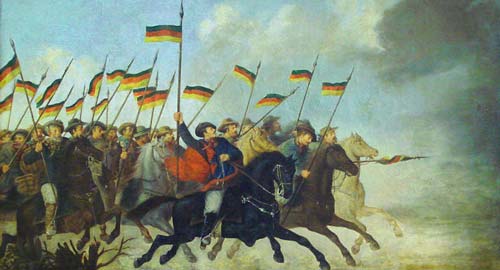
The War of Tatters
The second rebellion, chronologically, was quite different in nature. It became known as the Farroupilha, a name used to characterize the radicals after the abdication of Pedro I, and took place in the southern province of Rio Grande do Sul. The province had over 100,000 inhabitants, and the capital, Porto Alegre, had, in 1830, a population of between 12,000 and 15,000. As in Para, slaves composed more or less 30 per cent of the total population. But Rio Grande do Sul had a very different social structure from the rest of Brazil. The historical circumstances of the formation of the province had led to a fusion of military status and landownership, and the militarized dominant class exercised almost total control over the subordinate groups in society. Moreover, the province had gone through an important economic transformation in the second decade of the century, moving from agriculture to livestock production. A charque industry also developed along the coast. The occupation of the Banda Oriental in 1817 had given a tremendous boost to the estancieiros. They not only bought land in what became the Cisplatine Province but also transferred vast numbers of cattle to Brazil. The loss of the Banda Oriental in 1828 had been a severe blow, although it did not stop the regular smuggling of cattle across the frontier. In fact, economic and political relations among the estancieiros of Rio Grande do Sul, Uruguay and the Argentine provinces of Entre Rios and Corrientes were an important factor in the rebellion of 1835. They formed a powerful group of caudillos in search of a political organization that could best suit their interests.
The beginning of the revolt was not very different from that of the Cabanagem, in the sense that it turned around the reaction of local liberals against the formation of the caramuru Sociedade Militar in 1833 and against a president appointed by the regency. The president, who suspected secessionist plans among the local leaders, was overthrown in September 1835. Under the next president, himself a rich estancieiro, factions coalesced and in February 1836 open war broke out. In September 1836 the farroupilhas proclaimed the independence of the province under a republican government, although they were not able to keep control of the capital.In 1839, with the help of a small naval task force organized by the Italian revolutionary, Giuseppe Garibaldi, they invaded the neighbouring province of Santa Catarina, where a shortlived republic was also proclaimed. The fight dragged on for ten years until an armistice was agreed in March 1845.
THE CAMBRIDGE HISTORY OF LATIN AMERICA